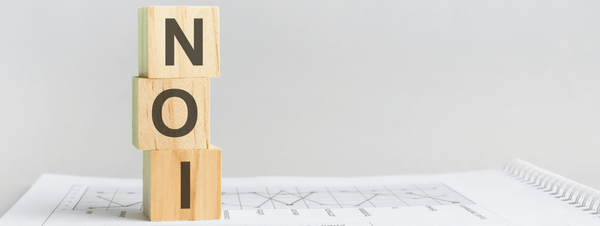Rental yields: everything landlords need to know
Rental yields are one of the most important investment metrics for landlords. Along with capital appreciation, they determine whether or not it's worth investing in a buy-to-let property. In an ideal world, landlords will find somewhere offering an appealing rental yield with the potential for long-term growth in the property's value. However, yields usually receive the most attention as they are indicative of how much profit you could make in rental income. And in this guide, we've got everything you need to know about rental yields to help you better understand how they work and what they mean for you.
What is a rental yield?
A rental yield is the amount of profit you make on a buy-to-let property after factoring in your overall costs and the income received from the monthly rent. Understanding how your rental yield works will give you a better idea about the return you'll get from the investment.
Knowing the rental yield is also helpful for new property purchases, as you can work out an estimation of what you’re likely to achieve in profit. Once you have the rental yield, you can see how the property is working for you and make long-term decisions about your investment. Our blog on useful property data sources lists a few helpful resources that can help you find reliable estimated rental yields on a property prior to purchase.
How do I calculate rental yield?
Calculating the rental yield is straightforward. You will need to take the total amount the tenant pays in rent throughout the year and divide it by the property's value. Then you multiply the answer by 100 to get a percentage value - this is your rental yield.
What does that look like? Let’s say you own a property worth £300,000, which receives a yearly rental income of £15,600 (£1,300 per month). To work out the rental yield, you would do the following calculation:
(15,600/300,000) x 100 = 5.2%
The gross rental yield for a property with these figures would be 5.2%.
What is the difference between gross and net rental yield?
While it’s relatively easy to work out the rental yield, it’s important to remember the difference between gross and net rental yields. You will need to perform different calculations to understand each one. As a general rule, sophisticated property funds aim for a net yield that is between 70-80% of the gross yield.
Gross rental yield
The gross rental yield is the overall figure before you’ve deducted your expenses from your annual rental income.
Net rental yield
The net rental yield is the figure after expenses have been accounted for. It's determined by calculating the property's price, the income generated and the associated costs of owning the property. These expenses include:
- Marketing expenses, such as agency fees.
- Costs associated with property maintenance, such as repairs and refurbishments.
- Property financing costs - e.g. mortgage interest.
- Void periods (i.e. lost rent and additional standing costs such as council tax and utility bills while the property is vacant).
- Bad debt.
- Service charges and ground rent.
- Compliance inspections and documentation.
- Pre-tenancy services (inventory, professional cleaning etc).
How does that look compared to the gross yield?
Let’s say you still own a property worth £300,000, which receives a yearly rental income of £15,600 (£1,300 per month). To work out the net rental yield, you would need to subtract the costs, such as mortgage payments, service charges and maintenance.
To illustrate, if your annual marketing costs are £2,800, you spend £1,400 on refurbishments, rack up £600 in pre-tenancy services, the service charge is £1,200 per annum, and spend a further £750 on repairs throughout the year, you would need to subtract £6,750 from the annual rental income.
(15,600 – 6750)/300,000 = 0.0295
0.0295 x 100 = 2.95%
That means you're left with a net rental yield of 2.95%. The net yield will always be lower, though it's important to remember that many expenses are tax deductible. For example, you can claim the cost of maintenance and service charges back on your tax return.
As of 2020-21, you can no longer claim any mortgage interest against your tax return. Instead, you'll get a tax credit of 20 per cent based on your mortgage interest payments.
What is a good rental yield?
Many factors go into determining an excellent rental yield, including how much you paid for the property and your own financial circumstances. As a rule of thumb, a yield of 5% or higher is considered a good return on properties based in London.
Each area of the UK features different yields, which is reflected by house values. In London, the average yield is lower than somewhere like Manchester, but the average monthly rent is much higher in the capital.
It's worth noting that your fixed cost base represents a lower proportion of your annual income the higher your rental returns are, leaving you with a better net yield.
Let's compare two hypothetical properties, a studio in London travel zone 5 and a 3-bedroom property in zone 2 as an example:
Studio - zone 5
Rent:£700pcm
Annual costs:
- Maintenance: £400
- Lettings compliance: £400
- Agency fees: £900
- Void costs: £500
Total costs: £2,200
Gross income: £8,400
Net income: £6,200
Gross as a percentage of net: 74%
3-bedrooms - zone 2
Rent: £3,000 pcm
Annual costs:
- Maintenance: £1,200
- Lettings compliance: £600
- Agency fees: £3,000
- Void costs: £2,000
Total costs: £6,800
Gross income: £36,000
Net income: £29,200
Gross as a percentage of net: 81%
That's a 7% difference in gross-to-net yield between the higher and lower rental income properties.
If you bought a property outright without a mortgage, the higher rental income in London might appeal more than a flat in the North, thanks to larger monthly rent commanded by properties in the capital. However, if you're looking to maximise yields, cities like Manchester and Liverpool provide higher yields of anywhere up to 9% a year. They might be more appealing if you're investing with a mortgage.
What’s the difference between rental yield and capital appreciation?
Yields and capital growth go hand in hand, but they work differently. The yield is a measure of the rental income compared to the property's value, while capital appreciation is how much your buy-to-let property has grown in value since the initial purchase.
Ideally, landlords want to buy somewhere with both good yields and strong potential for capital appreciation. It doesn’t always work out like that, and sometimes landlords need to choose one over the other. The best way to achieve both is by finding a place in an area with potential for significant population increase, e.g. somewhere that’s about to benefit from regeneration or .
How do I increase my rental yield?
Landlords are finding it harder to increase their rental yield as the market becomes increasingly competitive. Yet, there are small actions you can take that could lead to increased rental yields for your property. These include:
Reassess your asking rent
Increasing the rent is the most obvious – and perhaps controversial – way to increase rental yields. It’s certainly not a decision you should take without serious consideration. First, you need to be able to justify a rental increase based on local market charges. Secondly, you can’t raise the rent during an AST agreement and will need to wait until the renewal period. If you have great tenants who look after the property, it’s probably a wise choice to keep them happy at the same rental figure rather than increase it and risk losing them for a minimal gain.
Review your spend
Looking at your overall spending on the property can help reduce costs and increase yields. You’re obliged to fix maintenance issues around the property, so it’s hard to make any gains there. But reviewing your mortgage could be a clever move, especially if you can remortgage onto a lower interest rate and reduce your monthly payments.
Explore letting your property as an HMO
A house of multiple occupation (HMO) means you're renting out your property to a larger number of unrelated sharers or individual tenants on a room-by-room basis. HMOs usually have higher rental yields, as the overall rate is higher per room than if you let it as a single-family home. It's important to remember that an HMO comes with even more responsibilities than a standard buy to let, and you may need a licence before letting the property.
Other ways to increase yields:
- Aim for long-term lets and financial security instead of just accepting the highest offer.
- Add a bedroom.
- Improve storage.
- Refurbish/redecorate to make your property more competitive.
- Allow pets.
- Keep on top of legal changes and compliance to avoid costly fines.
What factors influence yield?
Lots of factors impact your achievable yield. Here is a summary of the key variables:
Location
Popular locations command higher yields. Any neighbourhood close to good transport links, amenities like restaurants, shops and fitness centres, and open spaces is likely to garner a better yield than more remote areas.
Property prices
When property prices go up, rental yields tend to go down. That's why many landlords aim to buy somewhere in an emerging area and see the value increase after investing. Exclusive neighbourhoods like Knightsbridge and Mayfair in London have some of the lowest yields in the UK, despite being the most desirable areas. That's because their house prices are so high.
Demand
If there is high demand for properties in the neighbourhood, you can expect the rental asking prices to increase. That means higher yields for the available stock in the area. However, if there’s surplus supply, you can also expect the rental prices to fall along with the yields.
Summary: understanding yields
Having a strong grasp of how yields work will help you better understand the performance of your investment portfolio. Yields are one of the most important metrics for understanding the health of your investment, and knowing how they work and what you can to do to influence them will give you a better chance of succeeding in the UK buy-to-let market.
For more on this topic, check out our top ten tips for improving your rental yield here.
At Home Made, we offer a hybrid lettings solution that adds value at every stage of the rental process. With our game-changing new landlord platform, The Property Wallet, we offer London landlords exceptional tenant-find and property management services for a low monthly fee.
- Avoid expensive upfront fees and spread the cost of marketing your property with the option to pay monthly.
- Free rent collection and arrears chasing.
- Sign off and see all charges and payments in your dashboard.
- Real-time updates on marketing, viewings, and offers.
Prices start from just £50+VAT/mo for tenant-find and £60+VAT/mo for management. Alternatively, you can pay a one-off upfront fee of £1,200+VAT for our tenant-find service.
If you would like to speak with us about your property needs, contact us via our website to find out how we can help. If you're ready to get started, book your free valuation here.
Book valuationCheck out more of our landlord advice here and follow us on Twitter, Linkedin, and Instagram for regular updates on industry compliance standards, market insights, and Home Made company news.




